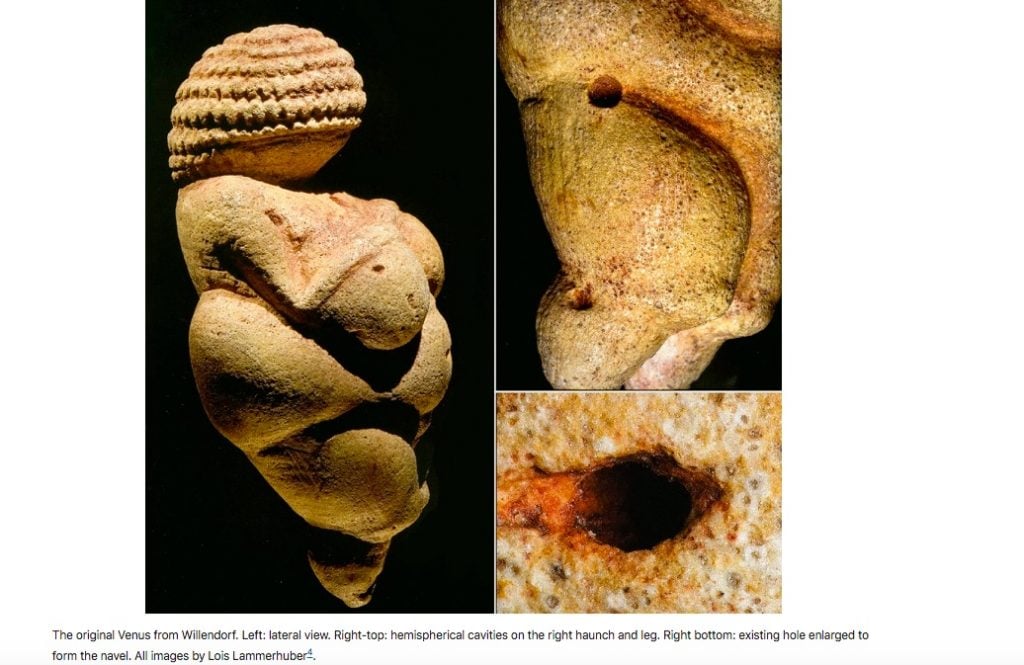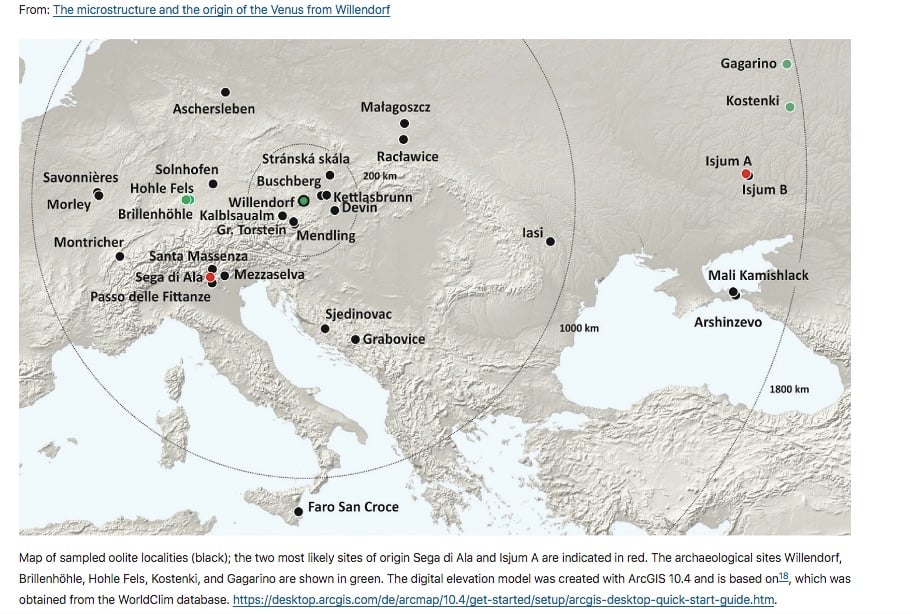Archaeology & History
A Stunning Report Has Pinpointed the Long-Unknown Origins of the Venus of Willendorf
The figurine, discovered in Austria in 1908, was likely made from stone carried all the way from Northern Italy.

The figurine, discovered in Austria in 1908, was likely made from stone carried all the way from Northern Italy.

Eileen Kinsella

Scientists in Vienna say they have finally solved the mystery of the origins of the famous Venus of Willendorf, the famed 30,000-year-old figurine that was found in 1908 at a Paleolithic site in lower Austria.
Using tomographic techniques to display a cross section of the solid object, scientists determined that the material used in the Venus most likely originates from a region in Northern Italy around 400 miles away. This marks the first time the geologic origins of the object have been confirmed with such specificity.
In a paper published by anthropologist Gerhard Weber from the University of Vienna along with Alexander Lukeneder and Mathias Harzhauser from the Natural History Museum in Vienna, the researchers say new micro-computed tomography scans allowed the identification of internal structural properties of the object and a chronological assignment of the Venus oolite stone to the Mesozoic era.

Sampling numerous oolite occurrences, “we found a strikingly close match for grain size distribution near Lake Garda in the Southern Alps (Italy). This might indicate considerable mobility of Gravettian people and long-time transport of artifacts from South to North by modern human groups before the Last Glacial Maximum.”
Another possibility does exist, however: that the stone actually came from a region in present-day Ukraine, roughly 1,000 miles east of Willendorf. But because samples collected from that site do not fit as clearly as those from Italy, the researchers believe it to be a less likely possibility.
The figurine was first found on the left bank of the Danube in August 1908 during excavations led by Josef Szombathy and supervised by Hugo Obermaier and Josef Bayer near the present-day village of Willendorf.

The Venus figure, which now lives at the Natural History Museum in Vienna, represents an idealized adult female form with “exaggerated genitalia, pronounced haunches, a protruding belly, heavy breasts, and a sophisticated headdress,” according to the new paper.
The work was made from oolitic limestone and painted red, possibly with ochre, which was almost entirely removed by the time of discovery. Oolitic limestones are otherwise absent in and around Willendorf, which was why Szombathy suspected the raw material of the Venus was collected elsewhere.